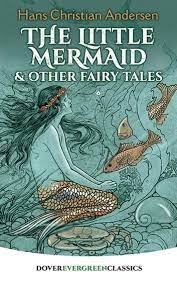Hans Christian Andersen was a Danish author and poet, widely regarded as one of the greatest storytellers in the world. He was born on April 2, 1805, in Odense, Denmark, to a poor family. Andersen’s father was a shoemaker, and his mother worked as a washerwoman. Despite his humble beginnings, Andersen’s imagination and talent for storytelling would propel him to international fame.
During his early years, Andersen showed a keen interest in literature and the arts. He developed a love for reading, often immersing himself in the works of authors such as William Shakespeare and the Brothers Grimm. His own creative abilities began to flourish, and he started writing his own plays, poetry, and stories.
In 1822, at the age of 17, Andersen moved to Copenhagen, the capital of Denmark, to pursue a career in theater and writing. He faced numerous challenges and rejections in his early years but managed to capture the attention of Jonas Collin, the director of the Royal Danish Theatre. Collin became his patron and provided financial support, enabling him to continue his education and focus on his writing.
Andersen’s breakthrough came in 1835 with the publication of his first volume of fairy tales, titled “Fairy Tales Told for Children.” The collection included popular stories such as “The Ugly Duckling,” “The Little Mermaid,” “Thumbelina,” and “The Emperor’s New Clothes.” These tales showcased his ability to weave moral lessons into captivating narratives, and they quickly gained popularity not only in Denmark but also internationally.
Andersen’s fairy tales were unique in their approach, departing from traditional folklore and incorporating elements of his own imagination. His stories often featured underprivileged or marginalized protagonists who triumphed over adversity, reflecting his own experiences and social consciousness.
Throughout his career, Andersen wrote over 150 fairy tales, including several novels, plays, and travelogues. His works brought him fame and recognition across Europe, and he embarked on numerous travels, visiting countries such as Germany, France, Italy, and England. Andersen’s travels inspired his writing and allowed him to meet prominent literary figures, including Charles Dickens and Victor Hugo.
Despite his success as a writer, Andersen’s personal life was marked by loneliness and unrequited love. He had romantic attachments to several women, including the Swedish singer Jenny Lind, but his feelings were often unreciprocated. Andersen never married and remained a bachelor throughout his life.
Hans Christian Andersen continued to write prolifically until his death on August 4, 1875, in Copenhagen. His stories have since become timeless classics, beloved by readers of all ages. Andersen’s legacy as a master storyteller endures, and his fairy tales continue to inspire and captivate audiences worldwide, emphasizing the power of imagination, resilience, and the triumph of the human spirit.

Certainly! Here are some additional details about Hans Christian Andersen’s life and contributions:
- Childhood and Early Influences: Andersen was born into a humble family, and his early years were marked by poverty. His father encouraged his love for literature by reading him stories and introducing him to the theater. These early experiences shaped his passion for storytelling.
- Struggles and Determination: Andersen faced many obstacles on his path to success. He endured financial hardships, literary rejections, and initial criticism of his work. However, he remained dedicated to his craft and continued to refine his writing skills.
- Literary Style and Themes: Andersen’s fairy tales were characterized by their imaginative nature, lyrical prose, and emotional depth. He blended elements of fantasy, folklore, and social commentary, often using metaphorical storytelling to convey universal truths and moral lessons.
- Impact on Children’s Literature: Andersen’s stories revolutionized children’s literature by departing from traditional moralistic tales and embracing themes of individuality, self-discovery, and the power of dreams. His stories appealed to both children and adults, transcending age barriers.
- International Recognition: Andersen’s works were translated into numerous languages, enabling his stories to reach audiences worldwide. His popularity extended beyond Denmark, and he achieved great acclaim in countries such as Germany, France, and England.
- Andersen’s Travelogues: In addition to his fairy tales, Andersen also wrote travelogues documenting his extensive travels throughout Europe and beyond. These travelogues showcased his observations of different cultures and provided insights into his own experiences and perspectives.
- Other Works: Although Andersen is primarily known for his fairy tales, he also wrote plays, novels, poems, and autobiographical works. Notable examples include “The Improvisatore,” “O.T.: A Danish Romance,” and “The True Story of My Life,” an autobiographical account of his childhood and rise to fame.
- Andersen’s Legacy: Hans Christian Andersen’s influence on literature and popular culture is profound. His fairy tales have been adapted into numerous films, animations, and theatrical productions, cementing their place in the collective imagination. His storytelling legacy continues to inspire generations of writers and artists.
- Honors and Commemoration: Andersen received recognition and honors during his lifetime, including knighthood and royal patronage. Today, his birthplace in Odense, Denmark, is home to the Hans Christian Andersen Museum, dedicated to preserving his life and works.
- Social Circle and Famous Friends: Andersen had a wide circle of acquaintances and corresponded with numerous influential figures of his time. He maintained friendships with fellow authors such as Charles Dickens, who translated some of his works into English, and Søren Kierkegaard, the renowned philosopher.
- Recognition by Royalty: Andersen’s literary talents were appreciated by royalty, and he received recognition from several European monarchs. Queen Victoria of England and King Ludwig II of Bavaria were among his admirers, and he had the opportunity to visit and stay with them during his travels.
- Personal Quirks and Eccentricities: Andersen was known for his peculiarities and eccentric behavior. He had a vivid imagination and often entertained guests with his storytelling and acting skills. He also had a deep fascination with ballet and attended performances regularly.
- Lasting Influence on Literature: Andersen’s impact on literature extends far beyond his own time. His fairy tales have become part of the global literary canon, inspiring countless authors, poets, and storytellers. His innovative approach to children’s literature paved the way for future writers to create works that engage young readers on multiple levels.
- Andersen’s Final Years: In his later years, Andersen’s health began to decline. He suffered from various ailments, including liver and lung problems. Despite his failing health, he continued to write, publishing his last fairy tale, “The Ice Maiden,” in 1868.
- Legacy and Commemoration: After his death in 1875, Hans Christian Andersen was mourned as a national treasure in Denmark. His legacy has only grown stronger over the years, and his birthday, April 2nd, is celebrated as International Children’s Book Day. His works continue to be cherished, translated, and adapted into various forms of media, ensuring his enduring presence in popular culture.
Hans Christian Andersen’s life and works continue to captivate readers around the world, transcending time and cultural boundaries. His ability to transport readers to enchanting realms, combined with his insightful observations of the human condition, has secured his place as one of history’s most beloved storytellers.










